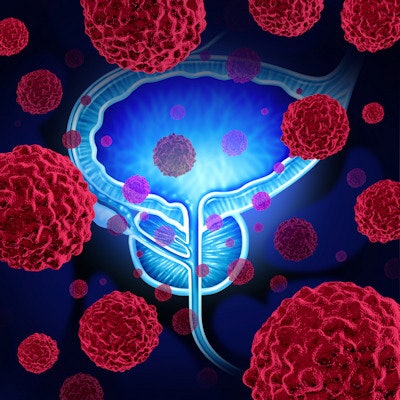
Prostate cancer patients who receive radiation in addition to intermittent hormone therapy may live longer without their disease progressing, according to a talk at the American Society for Radiation Oncology (ASTRO) annual meeting in San Antonio.
 Dr. Chad Tang.
Dr. Chad Tang.A team at the University of Texas MD Anderson Cancer Center in Houston, TX, presented results of a phase II clinical trial evaluating the combined approach in patients with oligometastatic prostate cancer. Over a period of more than two years, patients who received local therapyand hormone therapy experienced longer progression-free survival (PFS) than patients who received hormone therapy alone, according to the findings.
"Using radiation for oligometastatic prostate cancer can result in excellent tumor control and good long-term outcomes, and it may allow us to give these patients long breaks from hormone therapy," said lead author Dr. Chad Tang, in an October 25 news briefing.
Oligometastatic prostate cancer is cancer that has spread to five or fewer lesions throughout the body. In patients with these cases, the use of metastasis-directed therapy (MDT) -- local therapy to eradicate individual lesions -- in addition to standard hormone therapy has been increasing. Yet no randomized trials to date have tested combining the approaches in these patients, according to Tang and colleagues.
Between September 2018 and November 2020, they enrolled 87 men in the trial, 43 in a group who received combined therapy and 44 who received only hormone therapy. Options for local therapy included radiation, surgery, or cryotherapy to all sites of oligometastatic disease. The primary endpoint was disease progression, which was defined as death or radiographic, clinical, or biochemical progression.
The median follow-up was 22.1 months, and during that time, cancers progressed in 41 patients. Those who received local therapy as well as hormone therapy experienced longer progression-free survival (median not reached vs. 15.8 months for hormone therapy-only; hazard ratio = 0.25, p < 0.001).
In addition, the analysis revealed that fewer patients in the combination arm had new lesions two years after treatment (33% vs. 41%, p = 0.004) and patients in the combination arm also experienced normal testosterone levels longer than those who did not receive local therapy (p = 0.03).
The reason the combined treatment is effective could be the "potent synergy" between radiation and hormone therapy, according to Tang.
"Hormone therapy has been shown in multiple studies to synergize with radiation therapy to reduce prostate cancer cells' ability to repair themselves from radiation-induced DNA damage," he said.
Given that this is the first randomized trial to evaluate the impact of adding radiation to hormone therapy for patients with oligometastatic prostate cancer, additional research is warranted, Tan suggested.
"This study introduces a new paradigm of definitive radiation therapy to all of a patient's oligometastases in tandem with deescalated, intermittent hormone therapy as a means to preserve quality of life while still maintaining disease control," he concluded.




















